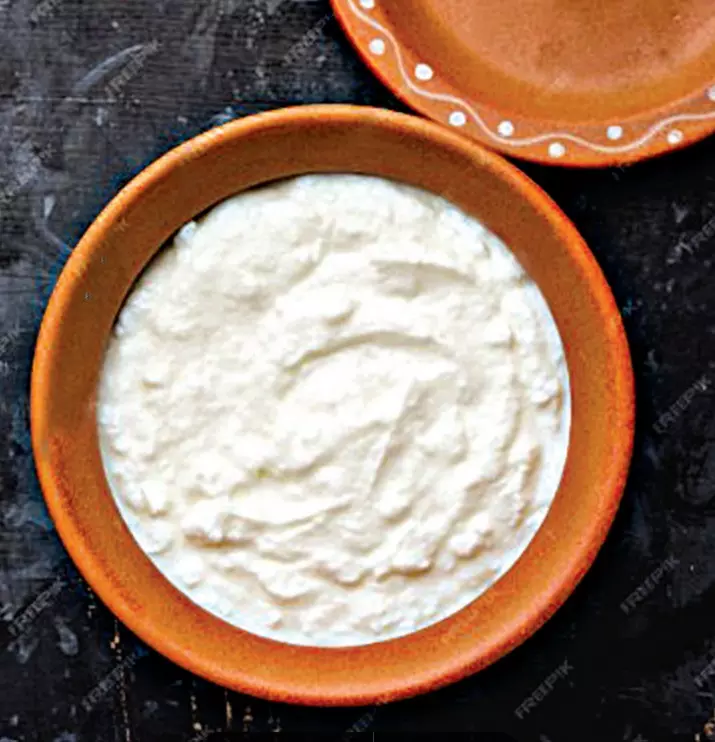An Udderly Delicious Gut-Friendly Choice!
In every culture and cuisine across the world, curd is a culinary star ingredient — it blends in most dishes and has tremendous nutritional value

There is nothing like the goodness of homemade curd. In fact, curd is the most multipurpose dairy product since time immemorial. Its creamy texture and tangy flavour make it a delectable nutritional powerhouse for healthy digestion. From the sacred kitchens of ancient India to modern-day health-conscious diets, curd shows how simple fermentation transformed milk into a culinary star. Its probiotic properties are globally recognised, making it a superfood in modern diets.
Nutritional Benefits
From being a home-fermented dish to now a trending health food, curd bridges traditional wisdom and modern nutrition. “Curd is rich in probiotics, which help improve digestion and maintain gut health. An excellent source of calcium and vitamin D, it supports strong bones. Regular consumption helps immunity, reduces acidity, and supports weight loss when included in a balanced diet,” states Jinal Patel, Dietician, Zynova Shalby Hospital, Mumbai.
The Curd Call
The best way to consume curd is in its natural, homemade form, plain and unsweetened. Add fruits or spices like jeera or mint for taste. “Avoid packaged flavoured yoghurts and sugar lassis, as they often contain added sugars and preservatives. During meals, pair curd with rice, roti, or have buttermilk for better digestion. Avoid curd at night as it may increase mucus formation. Don’t mix curd with fruits that are acidic or sour. Refrain from consuming curd if you’re prone to colds or have a sinus issue,” suggests Jinal.
People with lactose intolerance find curd easier to digest than milk, as the fermentation process breaks down much of the lactose. Today, lactose-free curd options make it accessible even for those with dairy sensitivities.
Yoghurt vs Curd
“Curd is made by stirring warm milk with a spoonful of the leftover curd—it is natural and easy, but of diverse texture. Yoghurt is a cultured dairy product made by fermenting milk with bacteria. Greek yoghurt is a thicker, creamier form made by draining ordinary yoghurt to rid it of excess water. This makes it more protein-rich and provides a denser consistency, making it a fuller, healthier alternative in a uniform, ready-to-consume form,” says Gagan Anand, Founder, Scuzo Ice ‘O’ Magic, Popsicle and Gelato Brand.
The ready-to-eat Indian market for yoghurt is growing, spurred by enhanced refrigerated packaging and through fast-delivery channels. “Flavoured yoghurts, sugar-free yoghurts, added protein combinations, and fruit cups are now popular as breakfasts, healthy snacks, or guilt-free desserts. Yoghurt has become a convenient and functional addition to everyday diets,” adds Gagan.
Desi Dahi Dishes
In Indian kitchens, curd has adapted to various regional tastes. From the tempered Gujarati kadhi and Bengal’s Mishti Doi to South’s coconut-laced mor kuzhambu, it’s a staple that’s versatile. “Whether it’s a summer lunch or celebratory spread, curd-based dishes are grounded in tradition. Dahi has been a hero in Indian Kitchens. It thickens gravies like kadhi or Dahi aloo, and transforms into marinades that soften meat. There’s something comforting about Dahi vadas soaked in curd, topped with sweet and spicy chutneys. On hot afternoons, a glass of buttermilk or lassi is refreshing. Then there are desserts like shrikhand and bhapa doi, where curd turns indulgent,” says Chef Ritesh Raje, Executive Chef, DoubleTree by Hilton Goa, Panaji.
Unmatched Versatility
Incorporating curd in one’s diet does not have to be repetitive—it can be sweet, savoury, or spicy. “Curd is a flavour-enhancer, texture-improver, and nutrition-booster that brings balance to a variety of dishes. Curd adapts to various preparations—from tangy chaat starters, to globally inspired Greek tzatziki dips, creamy raitas, and fusion desserts like yoghurt cheesecakes or shrikhand parfaits. In curries, curd, with its subtle tang, balances spices and heat. It lends a smooth texture without the heaviness of cream or butter,” says Chef Syamal Raju Annamneedi, Corporate Chef at Ironhill India.
In smoothies, curd gives thickness and a tangy base a pleasant tartness that complements fruits and honey. In meat curries, curd tenderises it during cooking due to its mild acidity. As a marinade, it is ideal for tough cuts of meat or fibrous vegetables; it breaks them down gently. “It keeps proteins moist during cooking, especially with dry-heat methods. When used in dips and chutneys, it cools down spicy ingredients like chillies, garlic, or ginger,” adds Chef Syamal. The trend of curd-based dishes reflects the modern palate that values health, tradition, and flavour. As diners become mindful, curd shines as a star on contemporary menus.
Mixed Berry Yoghurt
(Gagan Anand, Founder, Scuzo Ice ‘O’ Magic (Popsicle and Gelato Brand)
Ingredients:
• 150 gm berries (raspberries, blackberries and blueberries)
• 100 gm sugar
• 2 Tbsp lemon juice
• 300?gm full-cream yoghurt
Method:
1. Combine berries, sugar, and lemon juice in a saucepan over medium heat.
2. Simmer for 10 minutes until the berries break down.
3. Put it in the freezer. Stir chilled sauce into yoghurt, mix thoroughly, then refrigerate for 4 hours.
4. Churn in an ice-cream maker. Freeze it again before serving, or enjoy as a soft-serve-style treat.
Greek yoghurt is a thicker, creamier form made by draining ordinary yoghurt to rid it of excess water.”
Mango Curd Smoothie
(Chef: Ritesh Raje - Executive Chef,
DoubleTree by Hilton Goa)
Ingredients:
1 ripe mango (peeled, chopped)
1 cup fresh curd
6 almonds, soaked and peeled
4 cashews soaked
1 tablespoon honey or jaggery, saffron strands (optional)
¼ cup chilled milk/water (for consistency)
Method :
1. Blend mango pieces, curd, soaked nuts, and honey/jaggery in a blender.
2. Add a little milk or water if thick. Ensure there are no lumps.
3. Pour into glasses and garnish with chopped nuts or a few saffron strands.
Soya Chaap Tikka
(Chef Syamal Raju Annamneedi,
Corporate Chef at Ironhill)
For the Marinade
• 6 pieces soya chaap (readymade or fresh, about 250 g)
• 1 cup thick curd
• 1.5 tbsp gram flour roasted
• 1 tbsp ginger-garlic paste
• 1 tbsp lemon juice
• 1.5 tsp red chilli powder
• 1 tsp turmeric powder
• 1 tsp garam masala
• 1 tsp coriander powder
• 1 tsp kasuri methi crushed
• Salt to taste
• 1 tbsp oil
Method:
1. Boil or steam the soya chaap if using raw. Cut into bite-sized chunks. Pat dry and prick the surface with a fork.
2. In a bowl, combine curd, gram flour, ginger-garlic paste, lemon juice, and all the dry spices. Add oil and mix well. Add soya chaap pieces to the marinade and coat thoroughly.
3. Cover and refrigerate for 2 hours.
To cook the Tikka:
• Grill/Pan: Skewer and grill on a tawa or grill pan, basting with
butter until charred
or
· Preheat the oven to 200°C (390°F). Place marinated chaap on a tray and bake for 20 minutes, flipping halfway.
· Sprinkle chaat masala, squeeze lemon, and serve with mint curd chutney.
CURDDLESOME
• Janhvi Kapoor loves eating
dahi tadka tempered with
jeera and onions
• Alia Bhatt relishes curd rice
and even shared shared recipe beetroot curd salad
• Rashmika Mandanna loves curd rice and crunchy chips
• Adam Sandler and his daughter love frozen yoghurt
• Gal Gadot enjoys Greek yoghurt with dates or green apples

